Nothing to hold on to, nothing to release.
Samsara is nirvana.
There is nothing to attain.
When we realize that afflictions are no other than enlightenment,
We can ride the waves of birth and death in peace,
Traveling in the boat of compassion on the ocean of delusion,
Smiling the smile of nonfear.
— Thich Nhat Hanh
You can tell something about a place from its airport. Not just in the obvious ways – postcards, logos on t-shirts and coffee mugs, emblematic landscape translated in painting and sculpture – but in other ways too, like its pace and its food and its flooring. Portland’s funky teal carpet, for example, with its dark blue, purple, and red geometric pattern inspired by runways as seen from the control tower. When they started ripping it out a few years ago, there was a place-based uproar.
My first time deplaning in Tucson, or anywhere in Arizona for that matter, I notice the rust-toned leather gate chairs, a subdued and inviting red-brown color, one that I would see reflected in roadside murals and terracotta pottery, desert soil and broken mountains, copper mines and urban sprawl throughout my week-long trip here. In the Southwest my vision filter is set to sepia.
Bags in tow we make it to the rental car counter, Nick and me, and within a few minutes we’re fumbling with GPS in a slate gray Mitsubishi crossover, windows down, inviting in sunshine and dry late-winter heat. A stark contrast to the low gray-blue skies and damp temperate lushness we’ve left behind in the Northwest, our bones are alarmed, our senses heightened. I’ve forgotten my sunglasses, and the brightness hurts my unadjusted eyes. We pull over at a Walgreens and I grab a pair, along with some road trip snacks.
Getting to know a place means, among other things, learning its species and its ghosts. So it’s fitting that our second and third stops are Saguaro National Park and the tourist town of Tombstone. On an interpretive trail in the park we learn to pronounce saguaro (suh-wah-roe), that they’re sheltered by nurse trees when young, and that mature saguaros in turn provide shelter for birds, lizards, and desert rodents. We learn that the desert is as cooperative and nourishing as it is harsh and prickly. We navigate through tourists and weekend hikers until we find a spot amongst spring desert flowers to sit and ground, to shake off plane and settle in place.
To get to Tombstone, we follow billboards with Kurt Russell’s face on them from Hwy 10 to Hwy 80. For the crowds of tourists filing along Allen Street, the town offers a chance to ‘relive the Old West’ through gunfight re-enactments and ghost stories, cowboy boots and souvenir shot glasses. Its roads are dusty, its energy strange. The wind picks up and we duck into a haunted hotel, where we pay $10 each to join a family with bored-looking pre-teen kids on a 15-minute tour. Our guide, a ghost on a screen with a deep and surly voice, tells of stagecoaches and movie stars, of violence and extraction, of fires and mine shafts and morgues, of shallow graves dug in hard earth. Gunshots ring out without warning, making us all jump and laugh nervously. The tour doesn’t mention those who lived here before the arrival of these violent settlers.
In between places we parallel miles of pecan trees on either side of the road, straight rows flashing hypnotically like the almond trees of Central Valley we passed the day before, monoculture everywhere, on our way from Eureka to the Sacramento airport. A pecan tree needs as much as 200 gallons of water a day, season dependent, water re-routed from shrinking rivers, pumped from reservoir to thirsty desert. The Southwest is in drought. Many of the nuts are bound for China.
And in between places we pass urban sprawl sprung from virgin desert, ever-creeping tentacles spreading cookie-cutter desert-hued houses and green golf courses shielded with high walls and electric gates, to keep out immigrants and climate change, presumably. They have swimming pools and man-made lakes. The Southwest is in drought. Rather than impose water restrictions, there are talks of desalinating the Pacific Ocean and importing water from the Great Lakes, some 2,000 miles away.
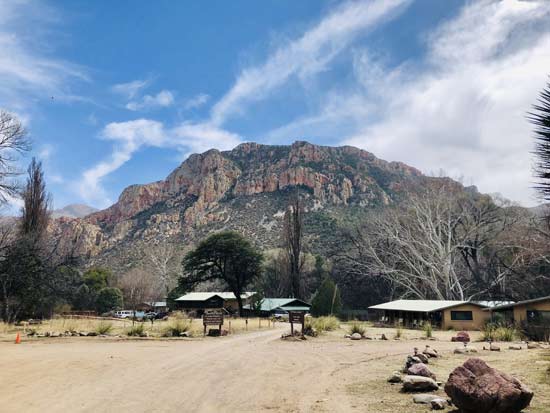
It’s dusk when we reach our day’s destination, the Southwest Research Station in the Chiricahua Mountains, one of several Sky Islands – isolated and biodiverse mountain ranges that spring from a sea of desert – just north of the border in southeastern Arizona. The collision of desert and mountains is, like everything so far, an oxymoron, sparse and abundant, jagged and soft. I’ll spend the next week here attending an environmental writers’ workshop. Nick has been permitted to spend the night in my dorm room, with plans to set off for Flagstaff the next morning to visit friends.
My fellow workshop participants – academics and scientists, activists and naturalists, healers and writers and travelers from across the US – have gathered here in these desert mountains seeking creative prose and poetry, language that can hold emotions Western science can’t, that can stand the weight of our pools of guilt and grief and gratitude. With the guidance of seasoned authors, we spend our days writing to prompts and workshopping each other’s essays on topics of place and landscape, movement and stillness, loss and reconciliation, moments of wonder and awe.
The sound of rain on roof and windows is our soundtrack for the first few days, ones I spend orienting myself to new landscape, to new place and people, to the vividness and groundlessness and discomfort of the unfamiliar. But I’ve put myself here, in this bardo-like in-between state, one I both crave and fear, for a reason.
Heading back to my room after a workshop on the second afternoon, the rain resumes its descent, big slow drops. I make it back just before it begins to pour and, once dry, sink into my yoga mat laid on cold floor between twin beds, breathing into new experiences, emotions bubbling in body and mind. The rain grows harder, louder, thunder echoing in the distance, then closer, until I feel the roar in my body, a presence making itself known. I breathe into sensations until I can no longer stay indoors – throwing my door open the air is electric, wind exhilarating, hail and rain and thunder and lightning. The storm has brought my dorm mates out too – one after another doors open, strangers turned temporary neighbors emerging to marvel and delight, to check on one another, having fuller and richer conversations in these moments, it seems, than any we’d had before.
On the third day the rain stops. My feet take me out of my room and into this landscape I’ve watched mostly from windows, crossing small swaths in between rest and meals and workshops. Disoriented, I hear water and move instinctively toward it. Finding the creek I walk alongside it, opposing the current, seeking a rock or log or dry patch of leaves that might offer a place to pause and breathe, letting my feet decide because my head has no idea. Sometimes you have to give your trust to something else.
Across the creek a bench is bathed in fleeting sunlight and I am drawn to it, but there isn’t a narrow-enough place to cross. The rain has been plentiful, blue-gray water fast and deep. Running out of passable riverbank I turn in the direction from which I’ve come and follow rocky shore, expecting that bench implies bridge and trail, pieces of human infrastructure in these remote sky islands.
Shortly the bridge appears – rickety and old, here again I relinquish control as I cross – and on cue the trail picks up, pointing me toward sharp desert mountain looming in the near distance, gray and copper and bone and green, a presence you feel when you forget to look up. These mountains, for many now-scattered Chiricahua Apache, are sacred and stolen, yet to be returned. They may also, according to our research station host, harbor “illegal aliens,” referring to human beings from the other side of the imagined and imposed border not far from here, displaced by the same systems and structures that stole this land.
I turn right and make my way back to the creek bank, a new vantage point, struck now by silver-white trees, Arizona sycamores, sprawling fractal branches vivid in golden sun. I walk and find the bench. It’s old and paint-chipped and overlooks a small rain-swelled pond, feeding by way of lively trickle a second pond just below, which in turn spills into creek, flowing cheerfully in the direction from which I’ve come. The pond is full of bright green algae and burnt orange leaves and light rain ripples, and here I sit to pause and breathe, permitted by privilege to inhabit this place that was taken, that has not yet been returned.
On the fourth day the group reaches my essay, one I’d written to a one-hour prompt the week before, consumed with fresh grief for the loss of our 8-month-old cat, Eugene, who’d been hit by a car that same week. Four months earlier we’d lost another cat, Birdy, in the same way; he was the same age. “Talk about alignment,” says Craig, our author workshop facilitator.
My short essay recalled bringing Eugene home from the shelter a few weeks before Christmas, a five-month-old brown, gray, and white tabby with feline upper respiratory infection. Still mourning Birdy, whom we’d lost just a month before, I nursed him back to health with a warm room, good food, kisses and Kirtan chants. In time his soft belly grew round, his green eyes bright and sweet and mischievous. He made friends with our dogs and other cats, delighted in exploring (and wreaking havoc on) our little house, and began to eagerly eye the outdoors, our quarter-acre permaculture homestead bordered by a relatively quiet residential road I now eyed with suspicion and fear.
The essay told of of our ultimate decision to let him outside and my active daily fear that I’d lose him too. It told of the phone call we received that evening from a kind stranger who found him in the road and wrapped his little body in a blue blanket. Of burying him beneath the small live Korean fir we’d used as our Christmas tree, near the compost pile where he’d played. Of kissing his pink and white feet and laying him in the earth. Of my broken attempts to sing a Kirtan chant. Of our guilt and our grief. Of the tension between my Buddhist practice, my awareness of impermanence and trust in interconnectedness, and my tendency to cling, the difficulty of letting go. Of the struggle and grace of surrender.
The group offers feedback. They comment on the uncanniness of the two back-to-back accidents. On my apparent tendency to collect souls, to buffer myself with life to keep out death. On my conflicted roles and my personal anxiety with death and loss. “This is about your own death,” one woman suggests. Is it? I wonder. For the rest of the week Craig gives me personalized writing prompts on the dead.
The week wraps up, we share final readings and trade contact information, and on the last morning, a quiet snowy one, Nick picks me up in the gray Mitsubishi. We drive slowly through white, silent mountains to a nearby diner in Portal, a small unincorporated community at the mouth of Cave Creek Canyon. We order coffee and pancakes and listen to the locals discuss the snow. “This is right unusual for March,” muses a slightly hunched old man over a breakfast burrito. “It’s like Christmastime.” There was nothing predicting this on the weather report, he adds. In the general store attached to the diner I buy a piece of amber selenite wrapped in plastic.
Back on the road, we hook up with Hwy 80 and make our way toward Bisbee, a town we’ve heard described as “funky” where we’ll spend the night. The snow behind us, the day warms as we parallel the border. A coyote crosses our path, moving fast, headed south. Our car narrowly misses him.
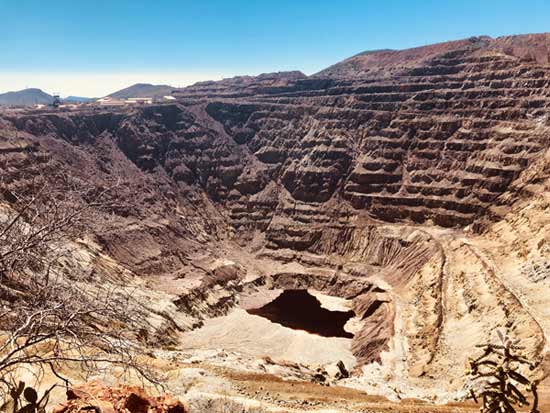
The town of Bisbee, seven miles north of the border, is jarringly marked by the shuttered Copper Queen Mine, which over nearly a century of production produced eight billion pounds of copper, fueling rampant industrialization. Shades of red and gray, yellow and purple, its colors hint at the more than 300 types of minerals found in the hills surrounding Bisbee: oxidized sulfide minerals, granite porphyry, breccia and limestone. The mine’s tiered spiral roads resemble a desert amphitheater, carved into exploded earth. A deep red liquid at the bottom oozes like blood. There’s lead and arsenic in Bisbee’s soils, an interpretive sign mentions casually.
The mines shut down in the ‘70s when they ran out of desirable ore and extraction moved elsewhere. Now tourists can don mining hats and ride a train deep into the mine, often guided by retired miners themselves. There are rumors of what will become of these great holes in the earth. Some think extraction will resume, should the demand skyrocket and production costs fall. Others dream up new uses – a few locals want to fill it up and use it to water ski, I overhear at next morning’s breakfast.
We check in at the Copper Queen Annex, Arizona’s longest continuously operated hotel and supposedly the most haunted place in Bisbee. Guests have told of hearing whispers, of coins and stuffed animals disappearing, of mysterious shaking doors. Finding our room comfortably quiet, we settle in and rest for a bit before heading out to explore the town.
Funky seems an apt word to describe Bisbee. Alleyways are lined with prickly pear and colorful artwork, some beautiful, some bizarre. Shops catering sleepily to tourists are filled with random knick-knacks and souvenirs, like the tattered message in a bottle that reads “Trapped in Bisbee, AZ, don’t send help,” or the t-shirt proclaiming the town as “like Mayberry on Acid.” Both seem fitting.
We eat vegan tacos on an outdoor patio and turn our faces toward the sun. Afterward, at a shop filled with crystals, elixirs, and natural body products, I buy a rose quartz and a small bottle of Magenta Cholla flower essences, said to “reconnect you with your ability to be guided from within and to trust your path, even in times of chaos, darkness, or initiation.” Magenta Cholla, the description continues, “is one of the most powerful medicines for mid-wifing oneself through a time of cosmic transformation, initiation, and blossoming into fullness.”
The shopkeeper, a tall woman in her mid-20s wearing a muted vintage dress, cowboy boots, and a long blonde braid, asks about our plans. We tell her we’re thinking of driving out to do some hiking. “There’s some good hiking you can do from town,” she tells us. “You don’t need to drive.” She recommends that we walk up OK Street and turn right at the blue Jesus, following the sign pointing toward his cross. “You can get a great view of all of Bisbee,” she says.
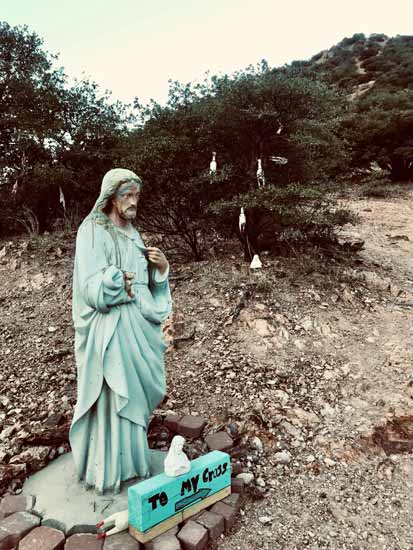
We throw out our plans and follow her directions. We walk up OK Street, a steep and narrow road dotted with small houses precariously perched, until we find the dusty blue Jesus. His right hand is missing, and it looks as though someone’s tossed earth-colored paint on his face. The bush behind him is strewn inexplicably with white and red plastic chickens. A painted blue sign at the base of the Jesus reads “to my cross” with an arrow, and we follow it to climb a steep and broken mountain, millions of pieces of gray- and rust-colored earth shifting beneath our feet. It’s hot; we shed layers and stop often for water. The sky is blue with cotton ball-like clouds, and the half moon is out.
At the top we reach a shrine marked by two white crosses you can see from town center. Amongst broken rock are tucked flowers and photos of loved ones, tinsel and candles, jewelry and religious figurines. Parts of the shrine have been painted with spirals, patterns, and words on white background.
We can see the town below, houses and churches and roads, tiny cars on highway passing exploded rust-colored earth. From here the landscape is a spire, circling through the mountains and down into the town. At times it’s still and silent, but then the wind shifts and from our perch amongst death we hear life below – motorcycles, barking dogs, a drum circle. We stretch out on a rock spray painted with question marks and the words: “Know the answer is love.”
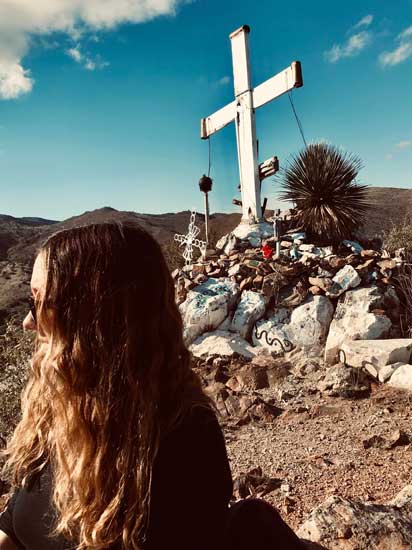
Lying on warm rock, my gaze meets a puffy white cloud directly above, so close it seems I might touch it. But seemingly solid and tangible from afar, close up I can see that its borders are permeable and translucent, pulsating in hypnotic rhythm, impermanent and in flux. I watch transfixed as the cloud grows smaller and smaller until it disappears all together, and the tears come then. I cry and laugh at the same time until there’s a palpable release that feels like gratitude. Nick sits quietly nearby, understanding. He cried too, he tells me later.
Eventually we make our way down. I descend the steepest parts slowly, my feet faltering on broken earth. “It’s more supportive than you think,” Nick calls to me from below. “There are hand holds everywhere.”
Leaving Bisbee for Tucson the next morning we stop and walk along the San Pedro River, flowing north from Mexico, unimpeded for now as it crosses the invisible border. We dip toes in brown water, rest at the base of cottonwood trees, listen to birdsong. A couple of Border Patrol agents are walking too. They glance briefly up at us, then a smile and a nod. A few miles south, along the border, a drone blimp drifts silently, perched like a bird between clouds as they form and fall away.
Back in the Mitsubishi heading north on Hwy 90 we pass through Sierra Vista and its Target, Chili’s, and cancer center. A few miles out of town we hit a Border Patrol check point, cameras pointing everywhere, dogs searching cars under white tents. An agent peers into our trunk, strewn with suitcases and pamphlets and souvenirs – “how’s it going folks, anybody back here?” – then gives it a pat, two quick ones, a good to go, a “have a good day.”
Scenery along the interstate to Tucson is a checkerboard of prickly pear and cholla fields, oil refineries and industrial parks, commerce centers and new construction. “The sprawl here’s outrageous,” Nick says. “We’ve been driving through Tucson for so fucking long.” Signs alert us of roadside fry bread and an ostrich farm where visitors can feed stingrays and take monster truck tours. We detour to Picacho Peak State Park and wander through explosive orange and purple wildflowers, the most vibrant bloom in years.
That evening, our last in Arizona, we eat stripmall Thai food near the university law campus, watching parking lot palm trees sway in the evening breeze. Plastic pink and purple flowers enliven our table and match the deep pink and purple stratocumulus clouds looming in the distance, hinting of a storm to come, maybe, but not for sure.
Settled under stiff sheets in our king-sized airport hotel bed, we scroll through cable TV channels. A commercial co-opts the climate change narrative to sell cheese crackers. An ad for a new nature show perpetuates the notion that the hostile non-human world will destroy us if we don’t finish conquering it first. We find a funny movie and watch in the dark.
In the morning we eat mini-muffins and sweet cereal at tables beside strangers, last night’s neighbors, who are speaking Spanish and doing the same. The TV chatters about tweets and borders and walls as plastic spoons scrape Styrofoam bowls dry. The airport shuttle is late. A woman stocking cereal bins drops what she’s doing to take us. She seems exhausted but smiles warmly and talks of Arizona weather as we make the five-minute ride.
Through security, one last border check, we sink into rust-toned leather gate chairs. The desert dust caked on my dry skin has drawn my body a shade closer to their subdued and inviting red-brown color, the color of roadside murals and terracotta pottery, desert soil and broken mountains, copper mines and urban sprawl. Home nearly twelve hours later, exhausted from the trip, a hot shower washes most of it off, but there’s a bit lodged in me now.
A few days later a blue line on a little plastic stick tells me I’m pregnant with a baby, our first, conceived in broken desert mountains, to be born into a broken and interdependently co-arising world. And here it is again, life rubbing against death, inseparable, a friction that can catch fire. Head spinning and surrendering to the flow and alignment of it all, I continue floating through the world, grasping and letting go, forever forming and falling away.
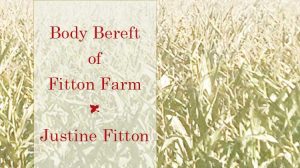
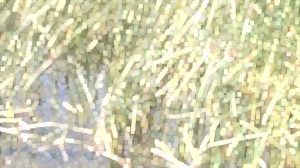
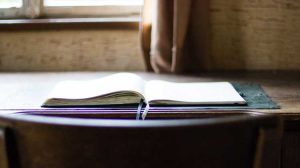
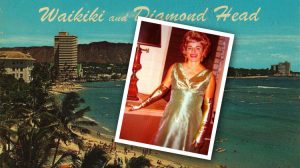

Tara K Shepersky says
“…language that can hold emotions Western science can’t, that can stand the weight of our pools of guilt and grief and gratitude.”
<3